A chapter from
Explorable Flexagons
Next chapter:
Generating Sequences
Flexing Flexagons
A short tour of different ways to flex a flexagon
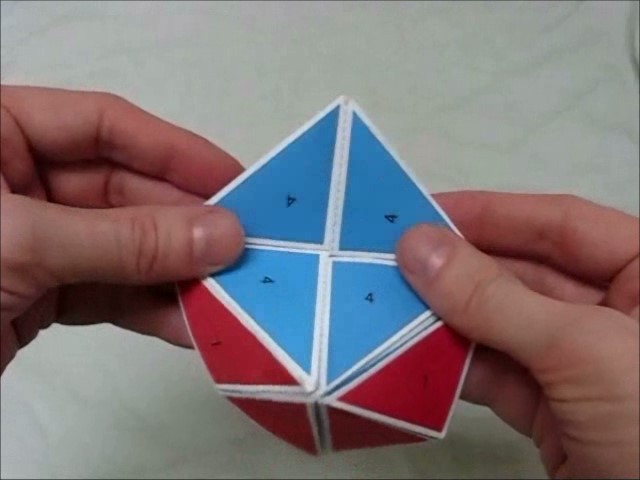
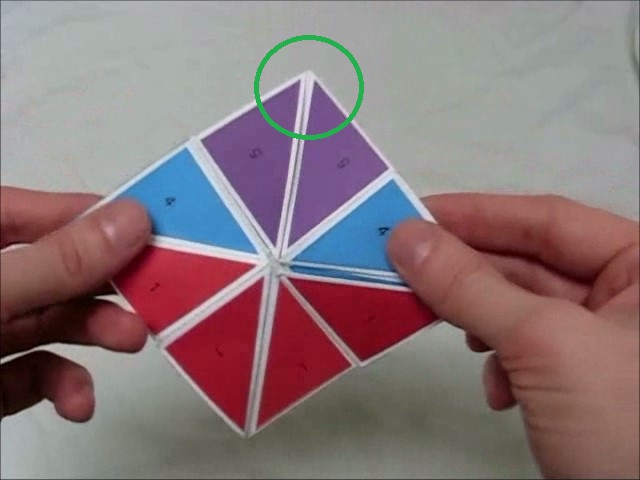
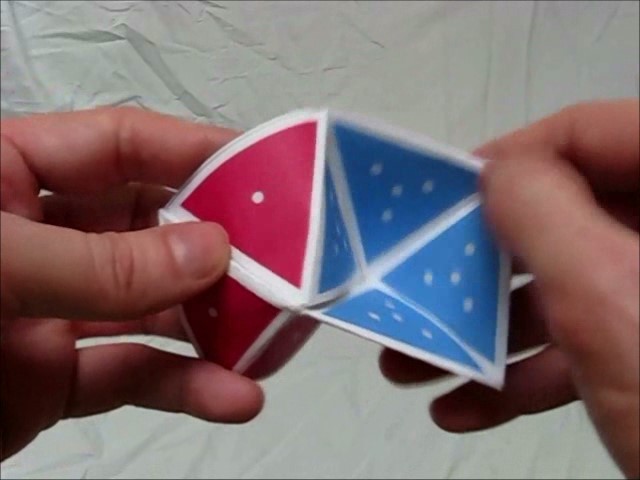
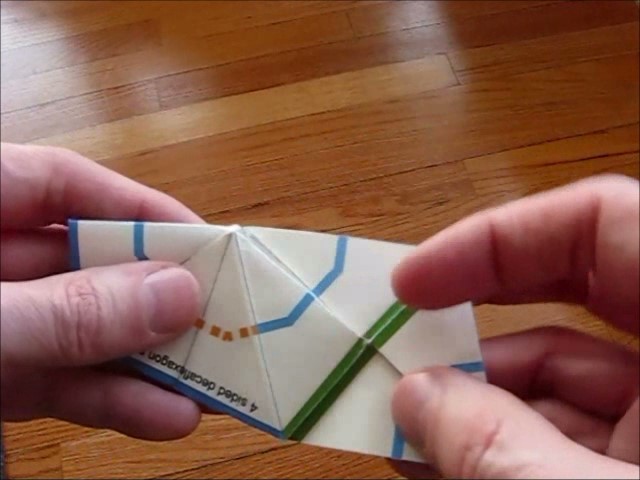
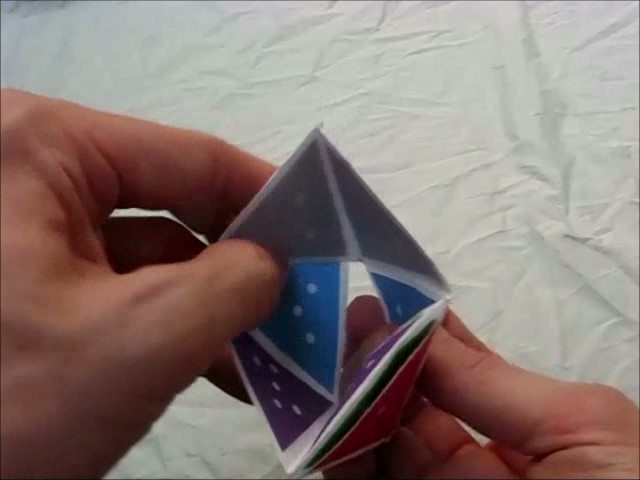
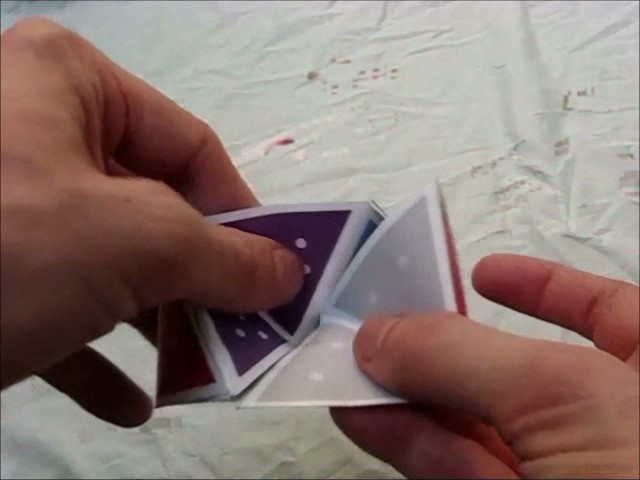
The previous chapter showed how to use the pinch flex to explore a flexagon. But there are lots of other ways to flex a flexagon, all of which rearrange the leaves in different ways. On this page, we’ll cover flexes like the tuck flex, pyramid shuffle, and v-flex.
The best way to learn a new flex is on the minimal flexagon that supports the flex, which is the flexagon that has exactly the minimum structure necessary to perform a given flex. On this page you’ll find a variety of flexes, and the option of trying out the minimal flexagon with a variety of flexagons.
For flexagon names, prefixes are used to reflect the number of polygons per face, e.g. hexaflexagon indicates there are 6 triangles per face. Additionally, these names are often proceeded by a word that describes the shape of the triangle, e.g. right for a right triangle.
- 4: tetraflexagon
- 5: pentaflexagon
- 6: hexaflexagon
- 7: heptaflexagon
- 8: octaflexagon
- 9: enneaflexagon
- 10: decaflexagon
- 12: dodecaflexagon
- equilateral: all sides equal
- silver: 45-45-90 triangle
- bronze: 30-60-90 triangle
- right: one angle is 90 degrees
- isosceles: two sides are equal (the default)
You may also see an additional prefix used to indicate the number of faces in the flexagon. For example, a pentahexaflexagon is a 5-faced hexaflexagon. But, as you’ll see below, the concept of a “face” of a flexagon only makes sense when using the pinch flex, not when using any of the myriad other possible flexes.
Pyramid shuffle
Step through the images to see the pyramid shuffle on an equilateral hexaflexagon. The green circle on the first and last slides indicates where the current vertex starts and ends for the flex.
The flex notation for the pyramid shuffle is S.
Performing the flex in reverse is S'.
You can also undo the pyramid shuffle by turning it over, doing the pyramid shuffle one vertex to the right (clockwise),
then turning it back over again, summarized as S' = ^>Sh<^.
The pyramid shuffle requires at least 5 leaves per face (i.e. a pentaflexagon or greater). It requires mild bending of the leaves on the pentaflexagon, but no bending for most other flexagons.
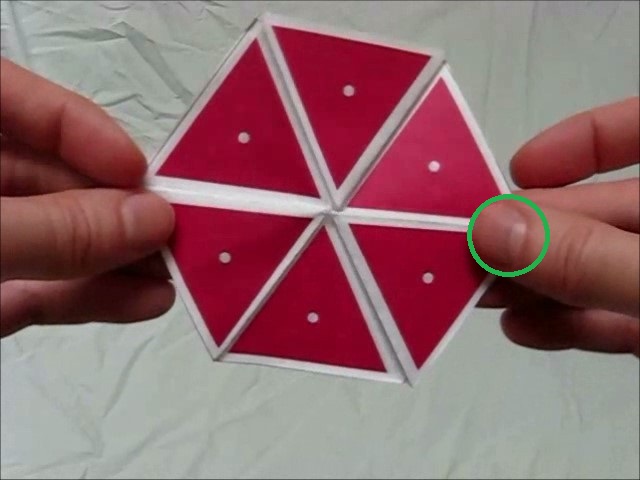
Here are some flexagons you can use to try the pyramid shuffle:,,,,,,,,,,,, or.
S button, you can see what the labels will look like after a successful pyramid shuffle.Flip flex
Step through the images to see a flip flex on a silver octaflexagon:
The flex notation for the flip flex is F.
As with the pyramid shuffle, F' = ^F^.
The flip flex requires at least 6 leaves per face (i.e. a hexaflexagon). It works well on right triangle flexagons. Isosceles triangle flexagons require at least 7 faces, however.

Here are some flexagons you can use to try the flip flex:,,,,,,, or.
Tuck flex
Step through the images to see a tuck flex on an equilateral hexaflexagon:
The flex notation for the tuck flex is T.
Or, to specify which additional flap needs to open, you can use T1, T2, etc.
The tuck flex requires at least 6 leaves per face (i.e. a hexaflexagon). It requires mild bending of the leaves on an equilateral hexaflexagon, but no bending for most other flexagons.
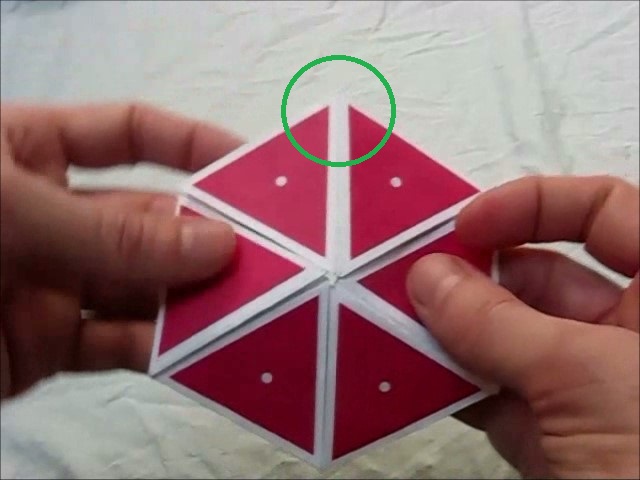
The tuck flex is different than the other flexes on this page in that it requires an additional opening in the flexagon in order to allow enough freedom to perform the flex. On the hexaflexagon, this can only happen in one place. On the heptaflexagon and above, however, there are multiple ways you can add this additional opening. That’s why there are multiple variants for some of them, e.g. the two heptaflexagons.
This is also why, unlike many other flexes, T' isn’t always the same as ^T^.
This is summarized as T' ~= ^T^, where ~= means the sequences are the same only if the structure of the flexagon allows it.
There are two bronze hexaflexagon variants because there are two distinct places you could potentially perform a tuck flex: at a point or at the vertex in the middle of an edge.
Here are some flexagons you can use to try the tuck flex:,,,,,,,,,,,, or.
V-Flex
Step through the images to see the v-flex on an equilateral hexaflexagon:
The flex notation for the v-flex is V.
V' = ^V^
The v-flex requires at least 6 leaves per face (i.e. a hexaflexagon).
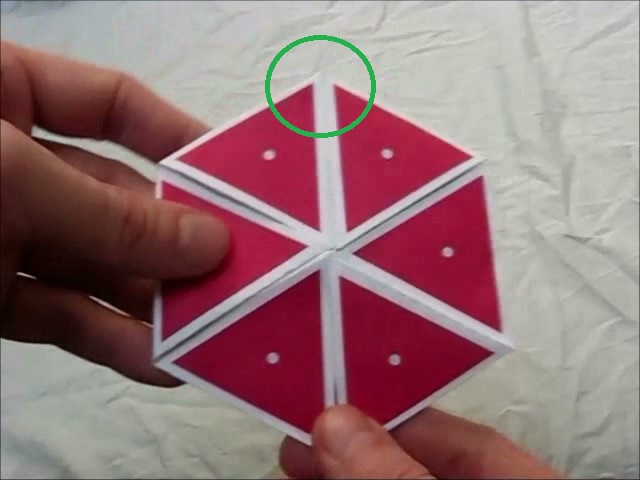
Silver tetra
Step through the images to see a silver tetra flex on a right decaflexagon:
The flex notation for the silver tetra flex is St.
St' = ^St^.
The silver tetra flex requires at least 4 leaves per face (i.e. a tetraflexagon). It works best on right flexagons, though it works on others with enough triangles per face.
It gets its name from the fact that the simplest flexagon it works on is the silver tetraflexagon.
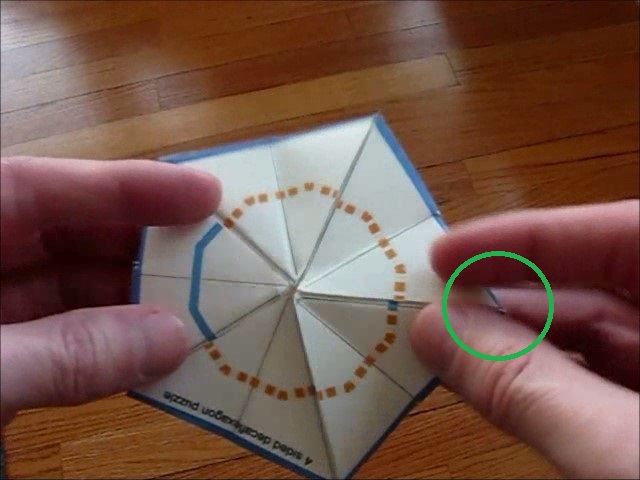
Here are some flexagons you can use to try the silver tetra flex:,,,,,,,, or.
What next?
That was a quick tour of some of the many flexes that are possible on a variety of different flexagons. A lot of them work on standard hexaflexagons, rearranging the leaves in far more ways that just the pinch flex alone, e.g. on the 5-faced hexaflexagon. Or these flexes can be used to make an interesting puzzle or maze.
View the next chapter, Generating Sequences, or look at the Table of Contents.
